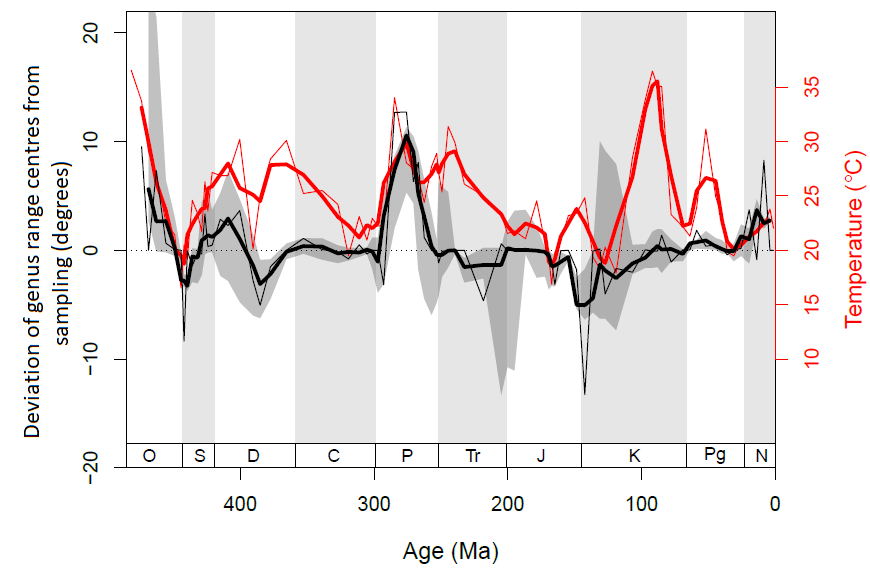ThermNiche: The role of the thermal niche in past warming worlds
PI: M. Aberhan and C. Reddin

Figure 1. Global warming tends to push species poleward consistently throughout the last half a billion years. Adapted from Reddin, C. J., Kocsis, Á. T., & Kiessling, W. (2018). Marine invertebrate migrations trace climate change over 450 million years. Global Ecology and Biogeography, 27(6), 704-713
Understanding the dynamics of past and present ecosystems and predicting directional changes in response to climate change are long-standing challenges in (paleo-)ecology. We propose to apply the concept of the thermal niche to study the effects of climate warming on shifts in the latitudinal distribution of species and in the thermal structure of faunal assemblages. Using occurrence data of marine benthic macroinvertebrates and maps of seawater temperatures derived from oxygen isotopes and climate modelling, we address in detail the effects of climatic ups and downs during the Pliensbachian-Toarcian (Early Jurassic) time interval, and at a lower resolution the Phanerozoic eon. We test whether warming has a predictable effect on the latitudinal ranges of species, alongside the hypothesis that warming preferentially results in poleward shifts of species (Fig. 1). Thermal niches may help us predict assemblage responses, based on the width of a species thermal tolerance and perhaps its location. Therefore, assemblage responses may not be uniform over different latitudes. Modern global warming is expected to most severely affect tropical species and polar species. We assess whether the inferred mechanisms have remained constant through time or if there are other response patterns possible. Understanding the role of the thermal niche, we expect to contribute knowledge about the extent to which marine ecosystems remain cohesive or are transformed in the face of climate change.


Our Social Media
News